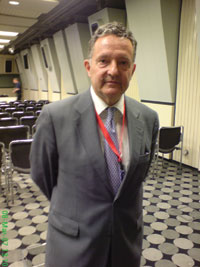
The United Nations World Tourism Organisation (UNWTO) predicts that the rate of international tourist arrivals is likely to keep growing at 4.1 per cent annually, taking last year’s 842 million arrivals to an estimated 1.1 billion tourists by 2010 and 1.6 billion by 2020.
But what does this mean for the region? KEITH J FERNANDEZ put the question to UNWTO secretary general Francesco Frangialli. Excerpts:
Your forecast says the global growth rate is gradually slowing over the next few years. How does that affect the Middle East?
Globally, international arrivals increased about 20 per cent in 2006. For the Middle East the increase over the same period was close to 40 per cent, almost double. And during this period you have had everything, Iraq, and Palestine and everything. Why is this happening? One, because the middle class is travelling – the problems they face in travelling to Europe and the United States coupled with the fact that in a period of uncertainty, you feel more comfortable in an environment similar to your own, where they speak your language, so people are travelling within the region. The second reason is that many investors from the Gulf have reinvested assets that were in Europe and the States into tourism and leisure within the region. When you have the demand and when you have the capacity to increase supply, you have customer satisfaction. So people will continue to travel and oil prices mean they have the money, so the boom will continue. Of course this depends on political stability.
But is that a reliable trend?
Globally, we predicted 10 years ago that the increase will continue at an average rate of four per cent. This has been confirmed by experience. Take into account the phenomena of compensation, geographically and economically – where you go somewhere else if there is a problem in your chosen destination, but carry with you the desire to return and do so when there is a window of opportunity – and you see why this trend is reliable and secure, and why we will see 1.6 billion arrivals in 2020.
And of course, market segmentation with the rise of the limited service hotels and carriers helps.
The region that includes South Asia and the Gulf is extremely interesting – and has outpaced the more traditional East Asian leaders – and we will soon release a survey on low-cost carriers in this region.
Living in the Middle East, with a fantastic project being announced everyday, the question is often thrown up: are we heading towards too much supply?
Since the UAE is the only country of the region which is not a member of the World Tourism Organisation, I can joke about it, (laughs) I cannot do that for a member. When people ask me the definition of sustainable tourism, I sometimes tell them to do the opposite of what Dubai is doing. However, more seriously, the success of Dubai is really impressive and for the time being there is no set-back. Still, we must be cautious – if you have a major external shock at the airport or problem of terrorism, a disease or something – then you will realise it is really fragile. I hope that will not happen, for the time being there is no indication of it, but you are never protected. When your tourism project is so artificial, of course the risk and the vulnerability are more important.
So your view is the Middle East isn’t doing enough for sustainable tourism?
Some countries are doing something, but it’s still not enough. Maybe this is because the region is in the first phase of growth, but now that they are maturing, it is time to realise that the importance of making your product more sustainable and more diversified to avoid risks and to minimise impact. Otherwise you are subject to economic risk, and to the social evils that come with that kind of a product. We will deliver this message at our commission meeting in Beirut in April.
